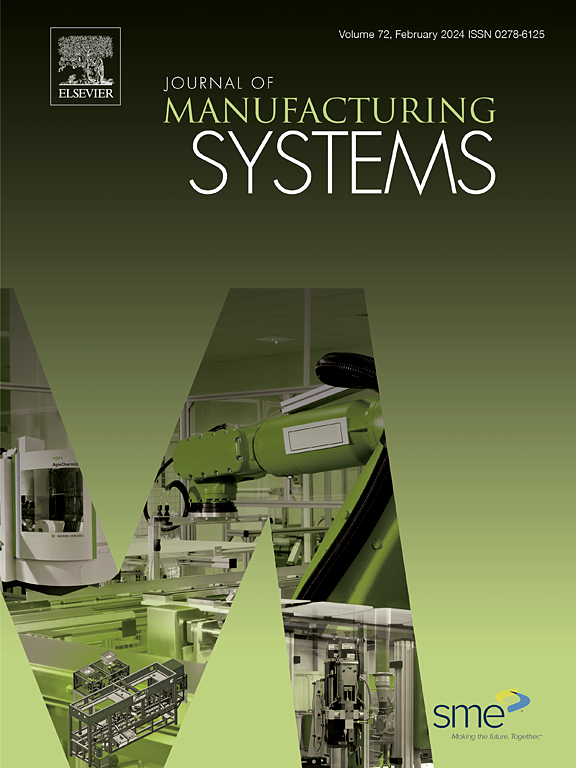Human-robot collaborative disassembly in Industry 5.0: A systematic literature review and future research agenda
IF 12.2
1区 工程技术
Q1 ENGINEERING, INDUSTRIAL
引用次数: 0
Abstract
Collaborative human-robot units have attracted recognition for their ability to be used for flexible product disassembly to help achieve intelligent, sustainable, and service-oriented remanufacturing. The adoption of human-robot collaborative disassembly (HRCD) in Industry 5.0 contributes to enhancing the flexibility of the eco-friendly sustainable manufacturing supply chain, realising a circular product life cycle, and facilitating the transition to carbon neutrality. To conduct a systematic examination of the development and research trends in HRCD, a quantitative analysis was carried out on 99 studies retrieved from databases. The research topic structure was examined from an array of perspectives, shedding light on the current state, future pathways, and focal areas in conjunction with a visually depicted knowledge graph. This paper enables scholars to comprehend the trajectory and pivotal aspects of HRCD through investigations of intelligent remanufacturing, thereby clarifying the path for further advancements in sustainable manufacturing practices.
求助全文
约1分钟内获得全文
求助全文
来源期刊

Journal of Manufacturing Systems
工程技术-工程:工业
CiteScore
23.30
自引率
13.20%
发文量
216
审稿时长
25 days
期刊介绍:
The Journal of Manufacturing Systems is dedicated to showcasing cutting-edge fundamental and applied research in manufacturing at the systems level. Encompassing products, equipment, people, information, control, and support functions, manufacturing systems play a pivotal role in the economical and competitive development, production, delivery, and total lifecycle of products, meeting market and societal needs.
With a commitment to publishing archival scholarly literature, the journal strives to advance the state of the art in manufacturing systems and foster innovation in crafting efficient, robust, and sustainable manufacturing systems. The focus extends from equipment-level considerations to the broader scope of the extended enterprise. The Journal welcomes research addressing challenges across various scales, including nano, micro, and macro-scale manufacturing, and spanning diverse sectors such as aerospace, automotive, energy, and medical device manufacturing.
 求助内容:
求助内容: 应助结果提醒方式:
应助结果提醒方式:


